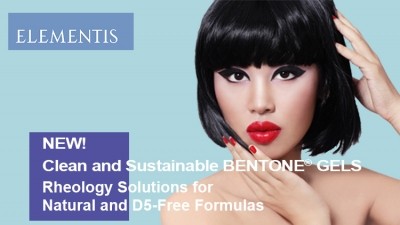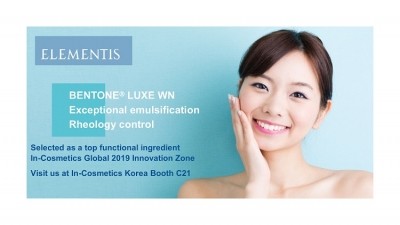Promotional Features
Overcoming the challenge of formulating amino acid facial cleanser
Asia’s market of products positioned for sensitive skin has demonstrated remarkable growth in recent years, driven by an increasing consumer demand. Thus, the proportion of products with sensitive skin claims has risen from 11.8% in May 2017 to 22.9% April 2021 in the facial skincare category[1].
Among all the skincare offers to consumers with sensitive skin, amino acid facial cleansers that remove impurities effectively, leave the skin refreshed and hydrated but not over-stripped gained more popularity due to their gentle image. From the majority of TMall’s, China’s biggest ecommerce platform, 64% of the top 100 best-selling facial cleansers feature amino acid claims[2].
Having said that, formulation of a good quality facial cleanser with amino acid surfactants remains challenging to many brands. The stability of crystalized amino acid surfactants system easily fails in high temperature stability tests, impacting the consumers’ experience. On the other hand, systems thickened with carbomer or xanthan gum usually impart a residual skin feeling after rinse-off, which is deemed unfavorable by consumers.
Keeping these formulation challenges in mind, Elementis utilized its hectorite technology to develop a mild facial cleanser, the Amino Acid Clarifying Foam Cleanser (F-4001-04), which caters to the consumer’s facial care needs. A broad formulation versatility with multiple unique benefits is offered by hectorite in this application.
Above all, hectorite enables high heat stability of crystalized amino acid surfactant systems which decreases the possibility of polyhydric alcohol and water separating from the system. The stability test shows that 5% BENTONE HYDROCLAY 2000 (INCI: Hectorite) helps the cleanser containing 40% Sodium Cocoyl Glycinate passing the +48 °C test over a period of one month. With the presence of hectorite, systems with lower dosage of amino acid surfactants (from industry average 55% to 30%) can endure the temperature challenge successfully, allowing a minimal usage of surfactants for ultimate reduction of sensitization.
Picture 1: +48C challenge test results: 40% SG with hectorite vs. no hectorite, 30% SG with hectorite vs. no hectorite
Hectorite enables extremely high suspension efficiency and stabilization properties in combination with an easy application due to its thixotropic flow behavior. In comparison to other mineral thickeners such as bentonite, it is significantly more efficient in building viscosity of the final product. While the green colored bentonite have an equidimensional shape, the slight beige, elongated hectorite platelets are better suited to water swelling and provide a smoother, more elegant skin feel. In formulation, this superior water swelling ability leads to usage levels of hectorite clay, which is less than half compared to bentonite, enabling pleasing yet cost-efficient cosmetic products.
There is more to hectorite clays than just their superior rheology modification properties. Hectorite clays also provide excellent oil absorption to a formulation leaving the skin mattified and flawless – important in times of increased social media activities. To demonstrate this important functionality in a simple test, pure castor oil was applied on a forearm and the amount of oil was quantified using a Sebumeter (Courage&Khazaka). Equal amounts of hectorites (BENTONE HYDROCLAY™ 2000 and 2100) were applied on the forearm next to natural and synthetic competitive clays (upper part of picture 2) and spread on the castor oil (lower part of picture 2). After a short drying time the better oil absorption capabilities of the hectorites over the competitive materials was obvious: BENTONE HYDROCLAY 2000 and 2100 show a more pasty appearance indicating better oil absorption while the competitive materials stay more powdery. The residual percentage of castor oil left on skin after rubbing off the clays with a dry tissue was quantified with the Sebumeter (picture 3). BENTONE HYDORCLAY 2000 and 2100 clearly outperformed competitive materials with extremely good oil absorption capabilities.
Picture 2: Oil absorption on skin with different clays
Picture 3: Residual oil left on skin after absorption with different clays
This is particularly important when approaching cleansing and detoxifying claims, since excess sebum, pollutants and toxins are being absorbed by the clay and washed off from the skin. For the cleansing and detoxifying performance of a clay, the cationic exchange capacity (CEC) poses as a key indicator. The CEC describes the number of cations a clay can hold, or in other words, its total negative charge. The higher the CEC, the more cations the clay can hold and release again onto the skin. The clay is taking up unwanted components on the skin’s surface and exchanges them for nourishing minerals like sodium, calcium, magnesium or potassium. Elementis’ BENTONE HYDORCLAY products belong to the smectite group of clays known to have the highest CEC values among the clays [3]. The methylene blue method was used to determine the CEC values of BENTONE HYDROCLAY 2000 and 2100 the different hectorite grades and competitive materials (picture 4). Compared to competitive synthetic and natural sodium magnesium silicates, BENTONE HYDROCLAY 2000 and 2100 showed significantly higher CEC values, with more than 55% higher CEC in its peak.
Picture 4: CEC (in milliequivalents of cations/100 g soil) of different clay materials
To prove the cleansing efficiency of hectorite, a wash experiment was conducted using a simple cleansing cream formulation with 3% of BENTONE HYDROCLAY 2100 or 3% of competitive clay materials. A blend of artificial sebum and black pigments applied on a forearm was washed off under running tap water (Video 1) using a clay cleansing cream. The residual pollution on skin was visualized using VisioFace RD (Courage&Khazaka) (Picture 5).
Video 1: Cleansing efficiency of BENTONE HYDROCLAY™ 2100 in comparison to competitive materials
Picture 5: Visualization of enhanced cleansing properties of HYDROCLAY™ 2100
BENTONE HYDROCLAY 2100 enables deep yet mild purification of polluted skin with a consumer perceivable advantage over competitive products.
What is hectorite?
Hectorite clay, named after the originating area in a location near Hector, California, is an exceptionally pure three-layer clay of the smectite family of clays. It is sourced from the world’s only hectorite mine, near Newberry Springs, Mojave Desert, California. The hectorite clay was created from volcanic ash by hydrothermal means. The salt beds found in this area in combination with hot springs yielded a unique clay mineral structure that is different to other smectite clays. The extremely efficient swelling capability and network stability of hectorite are because the clay was built from a quick volcanic eruption leading to a uniform charge density distribution while bentonite was built from a longer-lasting weathering process with less uniform charge density distribution. The hectorite clay ore is selectively mined using open-pit mining operations and wet processing removes impurities to create different grades of hectorite clay. The platelets are remarkably uniform with respect to elemental composition, charge density distribution and charge location. The hydrothermal conditions created platelets with a thin shape, which results in a favorable edge-to-face surface ratio. Pure hectorite clay is a 100% natural ingredient according to ISO 16128 and complies with the COSMOS standard. Due to its inorganic nature, it is an alternative to synthetic polymers, which may be classified as liquid microplastics that are harmful to the environment.
Conclusion
Hectorite clays are unique natural clay minerals. They provide significant benefits for the rheology control, stabilization, texture and sensorial effects of formulations targeting sensitive skincare products. Due to its unique shape, swelling properties, CEC and efficient cleansing, hectorite clays offer substantial benefits over other clays, which makes it a highly valued product and addresses the key claims for hydration, cleansing and sensorial attributes in facial cleansers as well as other skin care formats.
[1] Mintel
[2] Daily Chemicals Forefront: based on Alibaba Platform sales data
[3] Karakaya et al, The physical and physicochemical properties of some Turkish thermal muds and pure
clay minerals and their uses in therapy, Turkish Journal of Earth Sciences, (2017) 26: 395-409










